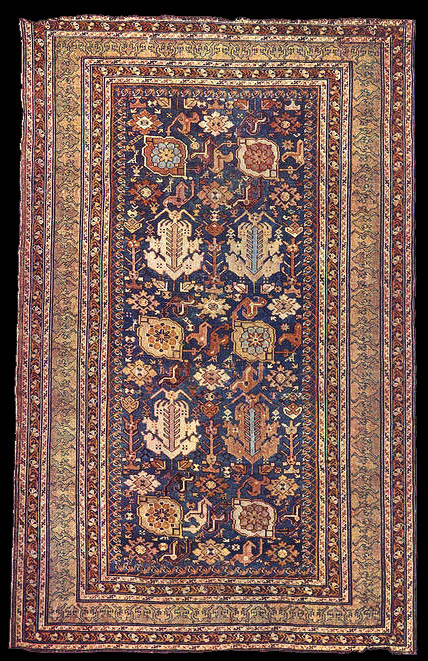|
Victoria and Albert Museum, No. 201. Acquired in 1897. 8 feet 10 inches x 5
feet 10 inches(2.69m x 1.78m).
WarpóBrownish wool; 17 to one inch; on one level.
WeftóBrownish wool; two shoots after each row of knots.
Knots.óWool; Ghiordes type; 9 to one inch; 80 to the square inch.
Colours: Nine. Medium blue (field); ochre; medium yellow, deep yellow;
brown-yellow; black; white; light blue; lighl crimson. The colours are faded
or altered and are in some cases hard to distinguish. It is evident,
however, that the S-devices in the odd-numbered borders originally showed a
succession of four different coloursóblue, ochre, and two deep yellows now
almost identical. Perhaps originally one of the last was a red.
The motives introduced into the design here are, as is the case with most
Caucasian carpets, derived from both Persian and Turkish sources. The field
has an angular and somewhat scattered version of the Persian design of
palmettes and other floral forms described under Plate VI, and seen again in
yet a different guise in Plate XVI.
The small floral forms projecting from the border on to the field are very
common in Turkish rugs, but only rarely seen elsewhere. The cointerchanged
pattern in the main border-stripe is of Persian origin, while the angular S-forms,seen
in four of the minor border-stripes, are of a kind occurring often in Asia
Minor work.
|

